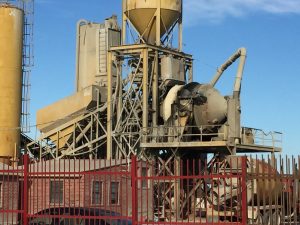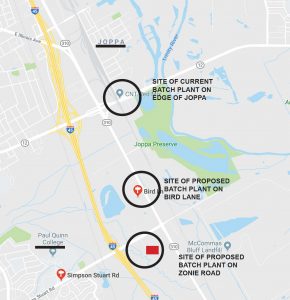Air Quality
Build a Better Bus Stop Design Contest Another Step Toward Improving Public Health for Transit Riders
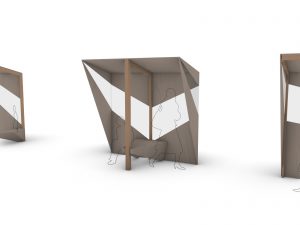 Inspired in part by its recent collaboration with Downwinders, Dallas-Based Better Block Foundation’s annual FD19 design competition is focusing on how to build a better, and more protective bus stop for transit riders
Inspired in part by its recent collaboration with Downwinders, Dallas-Based Better Block Foundation’s annual FD19 design competition is focusing on how to build a better, and more protective bus stop for transit riders
First orientation is January 16th, with milestones all the way up to the debut of the winning design in May. Better Block was founded a decade ago by Oak Cliff resident Jason Roberts. It “educates, equips, and empowers communities and their leaders to reshape and reactivate built environments to promote the growth of healthy and vibrant neighborhoods.”
Better Block recently helped out Downwinders during our Electric Glide Bus Pub Crawl by providing the spiffy portable stage used by Proterra founder Dale Hill at our stop at the Convention Center recharging station.
Originally both groups had more ambitious plans to design and build a number of pop-up bus shelters to test ideas on how better to protect waiting riders from street level Particulate Matter pollution and donate them to DART. DART had other ideas…and a long list of very particular specs to make the shelters official.
Despite this institutional resistance Better Block is determined to do some good and offer constructive suggestions. They requested and got DART’s long list of specs and are incorporating them into this year’s contest to DART won’t have any reason to reject them out of hand.
Despite these obstacles Better Block is determined to do some good and offer constructive suggestions. They requested and got DART’s long list of specs and are incorporating them into this year’s contest to DART won’t have any reason to reject them out of hand.
Why bus shelters? Studies show transit riders are among those most heavily exposed to PM pollution. One reason is they’re standing or sitting beside busy roadways, sometimes in shelters that actually trap PM pollution. Better Block wants to help design shelters that do actually reduce a waiting riders exposure to PM. 
Better Block Director Krista Nightengale explained “There are a couple things that led us to this: 1. Downwinders at Risk brought to our attention a recent study that showed that you could cut PM exposure by 30-40 percent by simply rethinking the bus stop So we want to think about how to reposition the bus stop to better protect people as they wait. 2. This is something we’ve seen/felt as we wait for the bus: many times, the stop is literally a pole in the ground. So how can we use what we do to give folks a place to sit and give them shade? And how can we make bus stops fun? “
Her comment and commitment are gratifying. It’s similar to what a DART board member told us after a discussion: “We never thought about PM before Downwinders brought it up.”
DART has never considered PM pollution in any of its decisions regarding bus type or bus shelter design.
Better Block’s decision to make better bus stops the center of their annual design competition is another small success story in Downwinders’ efforts to raise awareness about the dangers of PM pollution. We can’t wait to see the prototypes.
Plan Commission Zoning Vote for Bird Lane Batch Plant: Round 2
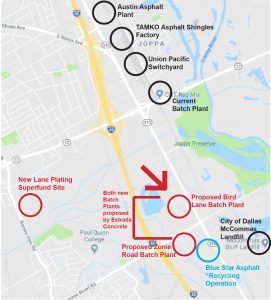
Dallas Plan Commission Hearing Scheduled
for Thursday January 17th, 1:30 pm
Dallas City Hall Rm 5ES
Speak Out Against
Systematic Environmental Racism
1) CLICK HERE TO SEND AN EMAIL TO
THE PLAN COMMISSION RIGHT NOW
Urge them to deny these permits…and consider a moratorium on ALL new industrial permits south
of the Trinity River “until the City can provide
a way to insure the same neighborhoods
are not always chosen to host them.”
2) SHOW-UP AT THE HEARING ON THE 17th
and speak against the zoning change
that Estrada Concrete is seeking.
Thanks in part to your emails, the Plan Commission delayed routine approval of the Bird Lane batch plant at its December 13th meeting and scheduled an individual hearing for Thursday, January 17th that could start as early as 1:30 pm at Dallas City Hall.
If you didn’t get a chance to send an email opposing the batch plant to the Plan Commission in December and want to do so you have that chance through our revised Featured Citizen Action “clickNsend” messaging. If you did send one in, send another.
This time, you can not only tell the Commission you oppose this specific permit…but ALL new industrial permits south of the Trinity River until the City of Dallas quits dumping all new polluters there.
We know the Bird Lane Batch Plant will be on the January Commission agenda but residents may be facing a twofer by then. The same company pursuing the Bird Lane site is also looking to put another new Batch Plant on Zonie Road right around the corner. After initially rejecting that effort because the paperwork wasn’t correct, it seems to be back on track up for Commission action as well – we just don’t know when yet.
All of this is just down the street from Blue Star Asphalt “Recycling” mess, aka Asphalt Mountain, current industry in Joppa, and close to the new Lane Plating Superfund site.
It seems certain that at the very least, the Plan Commission will decide on a Special Use Permit, or SUP, that Estrada Concrete needs to operate a concrete batch plant on the Bird Lane property for a minimum of three years..
Opposition is based both on the specific problems the batch plants would cause for neighbors, and the fact that this part of South Dallas already has a disproportional amount of polluting industries.
Xmas Brings a “Miracle on Choate Street”

Blue Star “Recycling” exposed by citizens and
reporter as one big illegal asphalt dumping
ground in South Dallas
City forces closure…once it finds out about it
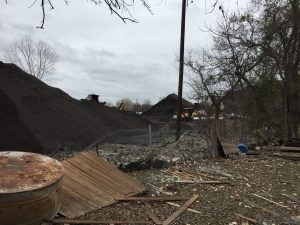
The view from Marsha Jackson’s backyard
Last week there was what you might describe as a kind of South Dallas Christmas Miracle Story – as in, “It was a miracle the city finally did anything to stop that crap.”
For a blow-by-blow account of how it all went down, you can read Dallas Morning News city columnist Robert Wilonsky’s account in two separate installments that ran in last Thursday’s and Friday’s paper here and here.
They tell the saga of Marsha Jackson’s one-woman fight to save her home of almost 30 years from being swallowed up by huge mountains of asphalt and used shingles by a company claiming to recycle them. A company that only popped up in the last 12 months or so and has completely destroyed her quality of life.
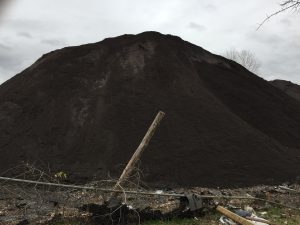 No photos or video can do her situation justice. Towering 3-5 story piles of what looks like coal dust are looming over her house, right up to the fence line that’s broken because of them. Heavy-duty diesel equipment is everywhere and in constant motion, moving piles of asphalt chips and shingles around. Large shingle-shredding machines spit out chips from both ends. A foul-smelling asphalt cooking operation adds a sulfuric haze. It goes on well into the night.
No photos or video can do her situation justice. Towering 3-5 story piles of what looks like coal dust are looming over her house, right up to the fence line that’s broken because of them. Heavy-duty diesel equipment is everywhere and in constant motion, moving piles of asphalt chips and shingles around. Large shingle-shredding machines spit out chips from both ends. A foul-smelling asphalt cooking operation adds a sulfuric haze. It goes on well into the night.
Ms. Jackson has been complaining about this situation to everyone, from the Texas Commission on Environmental Quality to the City of Dallas, for over a year. Despite her best efforts those complaints never got heard or acted upon. It might have remained that way for a good while longer.
Instead, what happened to Ms. Jackson is the kind of thing that usually only happens in movies.
On November 13th, Ms. Jackson met tenacious Temeckia Durrough of the Joppa Freedman’s Township Association at a community meeting about the new Lane Plating Superfund site in South Dallas. They exchanged their own outrages. Temeckia invited Ms. Jackson to come to the next Let Joppa Breathe Alliance meeting on December 4th to tell her story and add some people power.
She did and then she begin sending photos and video of what was right outside her window. Those prompted visits to collect our own evidence. Sprawling over multiple acres, artificial ridges of asphalt bits and and shingles ring the site and come right up to the edge of a creek that flows into the Trinity River a short distance away. There’s nothing to keep those piles from sliding into the creek and sure enough, that’s what’s been happening over the last year.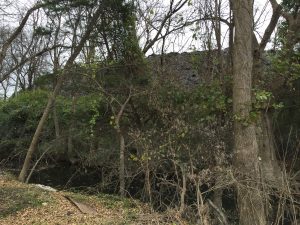
Exasperated by the actual site, Downwinders then reached out to a handful of local reporters capable of throwing a hot and heavy spotlight on an injustice. “Please help this woman living under/on top of a growing giant asphalt blob“ was the subject line of our December 10th plea. We suspected the only way to cut through all the reasons why nobody could help Ms. Jackson was to expose the fact that nobody was helping her.
To his credit Dallas native Robert Wilonsky, city columnist for the Dallas Morning News, answered the call. He went out to Marsha Jackson’s house and like everyone else except the agencies who are supposed to be outraged by this kind of thing, was indeed outraged. And that’s when things started to happen.
After trying to get basic information on Blue Star from Dallas City Hall he was even madder. Like the rest of us mere citizens, he was told he’d have to file an Open Acts Request – just to see the city inspection files, certificate of occupancy, etc. But maybe the reason the City didn’t want anyone looking is because Blue Star didn’t have ANY of the necessary paperwork to do what it’s doing, as Wilonsly later found out.
Because he was snooping around City Hall, Wilonsky was contacted by District 8 City Council Member Tennell Atkins on Wednesday, December 12th. Wilonsky urged Atkins to look into the awful situation…in his own council district. That he’d been getting complaints about for months.
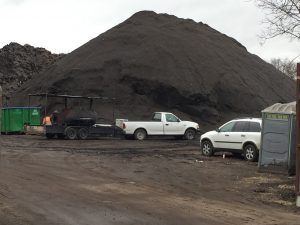 But after a visit, code compliance officer in tow, Atkins was full of righteous indignation. As was the Dallas Office of Environmental Quality and (Rockefeller) Sustainability, whose Director only learned about Blue Star from Wilonsky in passing…on Thursday the 13th, when Wilonsly’s first column on Blue Star went up in the early afternoon.
But after a visit, code compliance officer in tow, Atkins was full of righteous indignation. As was the Dallas Office of Environmental Quality and (Rockefeller) Sustainability, whose Director only learned about Blue Star from Wilonsky in passing…on Thursday the 13th, when Wilonsly’s first column on Blue Star went up in the early afternoon.
By Friday, December 14th, a month and a day after Marsha Jackson and Temeckia Durrough first met, the City was filing motions in court to close Blue Star down for at least a week. Considering how much official paperwork is lacking on the site, the fact that it’s the subject of an on-going TCEQ investigation, and is sorely liable to lawsuits by its neighbors, let’s hope it never opens again.
We don’t know how those huge piles are going to get cleaned-up yet but at least they’re not being added to. For now, the activity on the site that was a constant nuisance and health threat to Marsha Jackson has ceased.
In less than seven days the phone calls and emails of the most widely read local columnist for the only daily in town won a victory that months of campaigning through official channels by an ordinary citizen had been unable to pull off. Time and again the system let Marsha Jackson down until that institutional failure was the story that made the outrage stop.
Call it Ms. Jackson’s own hard-won Christmas Miracle.
Was it not for her persistence, this series of unlikely events could not have happened. Were it not each supporting link in the chain along the way – Ms. Douglas’ fateful invitation to Jackson to attend a community meeting, our gigging local journalists, one of those journalists actually being interested – there would be no happy ending to report yet. That’s how tenuous environmental justice is in Dallas.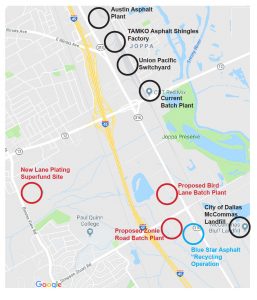
Besides showing the rewards of desperate determination, it was a lesson in grassroots perspectives for Reporter Wilonsky as well. Like most of us, he was dumbstruck by the fact that you can’t simply make an appointment to show up at City Hall, sit down, and read the official records on a company doing business next to you. Like many of you, he found out firsthand how passive the City is toward on-going disasters like the one next door to Ms. Jackson…until they become fodder for a front page column.
But we can’t depend on a single reporter to do the work of whole agencies, no matter how influential. This was the exception that proves the rule.
Even while the spotlight shone brightly on Blue Star, a hearing on a zoning change allowing a new concrete batch plant right around the corner was taking place at City Hall with a recommendation by city staff that it be approved. It’s one of two being sought in the same stretch of SM Wright freeway, which isn’t too far from the new Lane Plating Superfund Site, which isn’t too far from the TAMKO asphalt roofing shingles factory, the large Union Pacific switch yard, the Austin Asphalt plant and the Redi-Mix batch plant in Joppa. Fortunately, citizens were there to stop that mistake from happening as well.
Instead of seeing these as individual facilities like City Hall does, they should be seen as symptoms of the same problem of obsolete racist zoning plaguing South Dallas. As long as heavy industry is allowed to plop down next to homes in a way not allowed in east or north Dallas, you’ll see wave after wave of Blue Stars and batch plants targeting this area.
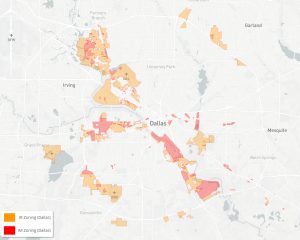
A wholesale examination of industrial zoning, of zoning that pollutes, should be taking place at Dallas City Hall as part of its revamped Economic Development policy. In the same way that the City recently said it won’t be a party to adding to concentrations of poverty through the siting of low income housing, it should also be policy not to add to concentrations of pollution in neighborhoods already absorbing more than their fair share. This requires a proactive perspective that has no sign of showing up within the ranks of the Office of Environmental Quality and (Rockefeller) Sustainability staff any time soon. That means residents are going to have to do this themselves – despite staff.
Just like Ms. Jackson, they’re going to have to be persistent in their demands. They’re going to have to stay focused. And maybe, just maybe if the right combination of chords can be struck, in the right sequence, at the right time, another more far-reaching chorus of “Hallelujah” can be sung in praise of a civic miracle. This time for all of South Dallas.
Environmental Justice Alert! Help Us Stop the First of Two New Batch Plants Proposed for South Dallas
Plan Commission Action THIS Thursday
You can send a email opposing both proposed batch plants to the Plan Commission today
JUST CLICK HERE
On Thursday the Plan Commission will vote on an SUP for the Bird Lane batch plant site – one of two being proposed by Estrada Concrete along the Stuart-Simpson/Central corridor in South Dallas.
There is more than a little suspicion that this is a backdoor way to get the pair of batch plants that were defeated by Joppa residents in March back in play – only in a more business-friendly council district. The two new requests are coming from a very small company run out of a house with only one batch plant in operation now, located in an industrial park in Hutchins just six minutes down the highway.
To defeat this bad idea we need you to:
1) let the Plan Commission know you oppose the batch plants and the zoning changes they require ASAP. Please use our simple ClickNSend email letter template to send a letter of opposition. Add your own comments if you want. It’s already addressed to all the Plan Commission members. All you have to do is fill it out and “click send.”
2) show up on Thursday at the Plan Commission to voice your opposition in person if you can:
DALLAS CITY HALL
CITY PLAN COMMISSION MEETING
THURSDAY, DEC 13th
ROOM 5ES
1:30 pm
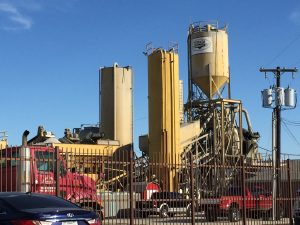
Staff has recommended approval of a Special Use Permit to operate a batch plant for three years at this Bird Lane site, which is next to homes and right around the corner from a second batch plant site the same company – Estrada Concrete – is pursuing via a zoning change request.
Since there are two sites there are two votes. The other site won’t come up for a vote until January 3rd at the earliest, but this Bird Lane site is gong through the pipeline now.
What’s needed now is sending these Plan Commission members lots and lots of emails saying we oppose these zoning changes and Special Use Permits AND are seeking a individual hearing for the Bird Lane site on the 13th.
There are two different types of agenda items when it comes to city decisions. One is the “individual” agenda item for which topics will be discussed and the public can make comments.
The other type of agenda item is a “consent” agenda item in which case the topic is not discussed and the group simply votes on it with the understanding that most agree with what is being proposed.
In this case, the batch plant’s Specific Use Permit (SUP) request has been recommended by staff for approval for a three year period and it is assumed that none of the city plan commissioners oppose the staff recommendation.
Dallas residents opposing this Bird Lane batch plant should contact their own District’s Plan Commissioner and City 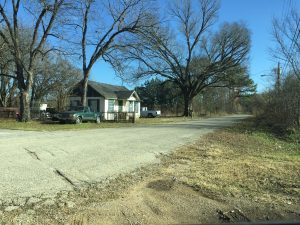 Council Member and let them know know you want the Plan Commission to pull the item from the “consent” agenda so it will individually discussed on the 13th as part of the public hearing portion of the agenda instead of the done deal “consent” part.
Council Member and let them know know you want the Plan Commission to pull the item from the “consent” agenda so it will individually discussed on the 13th as part of the public hearing portion of the agenda instead of the done deal “consent” part.
A hearing requires the public to be heard and a recorded vote take place by Plan Commission members for some kind of action – Delay, Disapproval, or Approval. We get to make our case against the batch plant only if it’s pulled off the consent agenda.
Folks opposing the zoning change may speak against the staff’s recommendation if they choose. The hearings start at 1:30 PM and can last through the early evening. It’s hard to tell what time the item will be heard, so be prepared to come and stay awhile.
The CPC docket is available https://dallascityhall.com/government/meetings/DCH%20Documents/plan-commission/12-13-2018_CPC_Docket.pdf
CLICK HERE TO SEND YOUR LETTER OF OPPOSITION
San Antonio and Houston Move Forward with New Regional Air Monitoring Networks. Dallas Doesn’t.
Last time we reported on the prospects of a new regional air monitoring network the idea received a 7-0 vote from a Dallas City Council Committee on September 24th but was delayed by staff request from going to the council until December 12th.
There was conjecture at the time that the delay was an excuse to actually find ways to kill the idea and if that was the goal, it’s 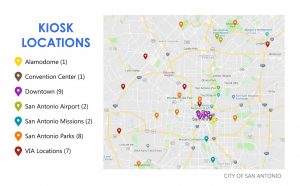 succeeding so far. After a year of hearing no objections from Dallas staff to the idea of establishing an independent entity among local governments to run the network, all of a sudden City Hall took great offense at the very idea.
succeeding so far. After a year of hearing no objections from Dallas staff to the idea of establishing an independent entity among local governments to run the network, all of a sudden City Hall took great offense at the very idea.
Over the past month Dallas County has been in talks with Dallas city staff to find another way to implement the network. Government-sponsored non-profits are being studied. Downwinders continues to advocate a entity that assures public participation in decision-making and robust enough to maintain a growing network of different monitors in different cities. Without more progress being made quickly it’s hard to figure out how the proposal makes it before the Council by December 12th.
While Dallas delays, both San Antonio and Houston are proceeding with their own new air monitoring networks.
In San Antonio, it’s through a deal with IKE Smart City that will trade ads on kiosks for 30 free kiosks that will give directions, recommend local eateries, provide free WiFi in a 150-foot radius, and take Particulate Matter pollution readings. The project is funded entirely by IKE Smart City. Unlike DFW, San Antonio hasn’t even violated the Clean Air Act and it already has more monitors than the Metromess.
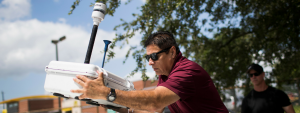 Beginning in December 2017 the Environmental Defense Fund working with the Houston Health Department and the university of California Berkley placed 20 air quality sensors across the city. Some were placed in known pollution hots spots like the predominantly black neighborhood of Pleasantville on Houston’s east side, where pollution from warehouses, metal recyclers, salvage yards, an Anheuser-Busch’s Houston brewery and an interstate often make it hard to breathe.
Beginning in December 2017 the Environmental Defense Fund working with the Houston Health Department and the university of California Berkley placed 20 air quality sensors across the city. Some were placed in known pollution hots spots like the predominantly black neighborhood of Pleasantville on Houston’s east side, where pollution from warehouses, metal recyclers, salvage yards, an Anheuser-Busch’s Houston brewery and an interstate often make it hard to breathe.
“If somebody asked me how many fixed site monitors we need, I would say there are never enough,” said Loren Raun, chief environmental officer with the Houston Health Department, which has since received funding to purchase similar instruments from Entanglement Technologies.
One can’t imagine anyone on Dallas city staff saying the same thing. In fact on more than one occasion staff has said they’re just fine with the nine monitors the Texas Nature Conservancy is due to be installing at Dallas schools this year and they’re in no rush to add any more.

Just another day in Joppa
And one especially can’t imagine Dallas city staff going along with putting monitors in known Dallas pollution hot spots like Joppa or West Dallas. Despite the recent controversy over the proposed two new batch plants rejected by the City Council in March – in part because of portable monitor readings from Downwinders showing already high levels – staff said recently they still have no plans to purchase their own air sensors.
This kind of official rebuff to high tech low cost sensors gives lie to the city staff’s rhetoric about “Smart Cities”as well as its sudden concern over asthmatic black kids. If staff really cared about them, why wouldn’t it buy air monitors it could use in field to investigate complaints in their neighborhoods instead of just guessing the air quality there, or using an EPA monitor nine miles away to claim everything was just fine? Why wouldn’t the City be rushing to install monitors in hots spots like Joppa? Because statements made in pursuit of Rockefeller Foundation grants do not carry the force of law, or even as it turns out, curiosity.
Electric Buses: A Big Climate Change and EJ “Something You Can Do Now”
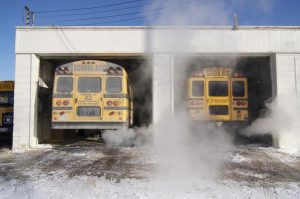
Register for the Electric Glide Bus Pub Crawl here.
Thursday, December 6th
Catch the bus at 6:30 or 7:00 pm
at the Green Door in the Farmers Market District
600 South Harwood Dallas 75201
Plug In. Get Lit. Stay Current.
How did we get from cement plants burning hazardous waste in Midlothian to transit or and school buses making runs in inner city Dallas?
The answer is PM, Particulate Matter. The two-decade fight against the cement plants was one long primer on PM pollution. They were, and remain the largest industrial sources of the pollution in North Texas. We learned firsthand about the toxicity, reach, and insidious health effects of PM pollution. Not just strokes and asthma, but IQ loss, Autism, Dementia, Diabetes, low-weight births. PM is the new lead.
Every boiler, furnace, fire, flame and combustion engine produce PM. Diesel engines emit an exceptionally toxic form of PM called Black Carbon.

Because they’re on the road so much, are diesel or natural gas-powered, and make people wait by the side of traffic-heavy roads to ride, bus systems turn out to be a major source of PM pollution. And climate change gases. And smog. A rough estimate shows DART’s bus fleet would be the 10th largest PM source in Dallas County if it were all parked in one spot. But of course its the dispersed nature of a bus fleet’s pollution that often makes it more of a widespread threat to public health than a stationary “point source” a.k.a. an industrial facility.
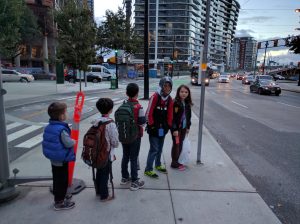
What’s missing is a constituency for electrification of school district bus fleets and transit agencies like DART and Trinity Metro. Because of the potential impacts and benefits, this could be a wide-ranging and powerful alliance – PTAs, transit riders, physicians, environmentalists, environmental justice advocates, and even the utilities that could buy the power from bus batteries. But until we get the ball, er wheel rolling, its all just that – potential.
One of the reasons we’re sponsoring the December 6th “Electric Glide bus pub crawl” as part of this year’s Root and Branch is that we wanted to start that rolling. And real, wheels-on-the-bus-go-round-and-round rolling discussions and presentations on the advantages of electric buses are part of the evening, but so is just showing your support for the goal of electrification as something local officials could accomplish right now, especially if they combine their collective purchasing power.
The more people that show-up on the 6th, the more DART and local school boards – whose memberships we’re inviting as well – will get the impression someone gives a damn and the more we’re a force to be reckoned with. We need a people’s lobby for 21st Century electric buses in DFW.
 In exchange for coming out and forking over $25, we give you three custom drinks, Graham Dodds’ food, a presentation by Dale Hill, the co-founder of the Proterra electric bus manufacturer, and maybe, just maybe some food for thought about what we all can do right now to advance a bunch of causes in one campaign that’s winnable at the local level in the Trump era.
In exchange for coming out and forking over $25, we give you three custom drinks, Graham Dodds’ food, a presentation by Dale Hill, the co-founder of the Proterra electric bus manufacturer, and maybe, just maybe some food for thought about what we all can do right now to advance a bunch of causes in one campaign that’s winnable at the local level in the Trump era.
Register for the Electric Glide Bus Pub Crawl here.
Thursday, December 6th
Catch the bus at 6:30 or 7:00 pm
at the Green Door in the Farmers Market District
600 South Harwood Dallas 75201
Plug In. Get Lit. Stay Current.
Dallas City Hall Stonewalls Open Records Requests for Mystery Clean Air Fund and Joppa Polluter
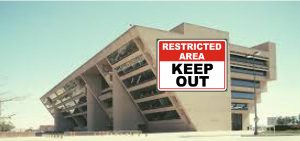
The question sounds like the lead-in to a joke, but it’s not: How many months does it take Dallas City Hall to respond to a simple Open Record request? Answer: we don’t know yet, we’re still waiting.
Back in July, you might remember we reported on the establishment of a regional clean air fund to fight coal plants a decade ago that still had over a half million dollars in it.
When we dug a little further, we got a response that the fund had been shut down and the money disbursed – despite the fact nobody could give us the details on how or why that happened, where the money went, and if any of it went to clean air work.
So we filed a Texas Open Records Act request to get any and all files on the fund. On July 16th. Governments have 10 days to respond and provide the files that aren’t attorney-client products. We have yet to get the paperwork we asked for from the City. What we have received is one after another email saying the response has been delayed…again. We’re now going on three months awaiting information for a fund that supposedly doesn’t even exist anymore. And this is after the city already received permission from the State Attorney General’s office to withhold certain files from us because they were “attorney product.” What is it about this fund and that half million dollars that the City of Dallas staff really don’t want their own residents to see?
Just as ridiculous is the city’s response to an Open Records Act request we filed to look at its files on TAMKO in August.
The huge asphalt shingles plant in Joppa had a long sting “upsets” and “accidents” between 2011 and 2015 that released over 7000 pounds of unaccounted for PM pollution. Those are TAMKO’s self-reported numbers and don’t even include fires when there was “100 Opacity” i.e., smoke. We know this because Downwinders was able to access the Texas Commission on Environmental Quality files on TAMKO way back in the summer. We put in the same request to the State that we submitted to the City of Dallas. Believe it or not, TCEQ was much more responsive and cooperative than the City of Dallas, who we’re still waiting on to release their files on the plant. Two months and counting and still no substantive response. Shouldn’t a resident be able to make an appointment, go down to City Hall and look at the public files on a well-known polluter? So far, the City of Dallas says no.
Dallas City Hall has a notorious reputation for mishandling, losing, or otherwise being non-responsive to Open Records requests. They aren’t know as “citizen-friendly.” But these two cases seem extreme because the delay is all out of proportion to the files being requested – for a fund that was shut down and a polluter in South Dallas. It certainly appears that staff is going out of its way not to hand over anything of import, no matter if its attorney work product or not. One can only guess why that is.
End of Year Report: DFW Smog Goes Up While Going Down; PM is Worst Since ’03
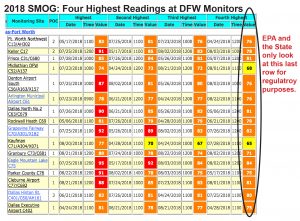
Only in the nonsensical world of EPA air quality regulation could the official regional average for DFW smog actually decrease despite the worst levels of DFW Ozone pollution in five years.
In 2018 a quarter of all North Texas official monitor sites recorded smog levels in the 90-95 ppb range for more than an hour. 2018 was the first time in two years that any DFW monitors have had 8-hour averages of 80 ppb or above, and the first time since 2013 since there been at least six. In fact, this year’s total number of 80-or-above monitors is almost equal to the total number from the last five years combined.
Nevertheless, the regional average for smog pollution that determines government action actually went down from 81 to 76 parts per billion.
How does that happen? Not without a lot of numerical manipulation. EPA’s formula for smog pollution classification is a two part affair. First EPA only counts the highest 4th highest annual reading from each monitor in DFW. That means every monitor gets three “Mulligans” or “do-overs” before the results are eligible for regulatory use. Then EPA combines the last three year’s worth of those highest 4th highest readings to produce a rolling average. So that 2018 average is actually the results of the highest 4th highest reading from 2016, 2017, and 2018.
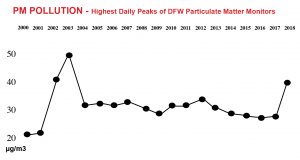
High readings from the summer of 2015 are rolling out of that three-year rolling average, while lower readings in ’16 and ’17 remain. While this year’s smog levels were higher, but not so extraordinarily high as to be able to counter the lower numbers making up the rest of the average.
But our smog was bad enough last year and this to once again make sure DFW is in “non-attainment” of the clean Air Act for the pollutant. For the umpteenth time in a row, we missed a deadline for meeting a Clean Air Act smog standard – this time it’s the 2008 75 ppb standard. If EPA follows its own protocol, that means DFW will be go from being “moderately” out of compliance to being in “Serious” non-compliance.
And please remember all of these numbers are based on only 20 smog monitors, half of which are located well-outside the DFW urban core, and none of which are located in Wise County, where Downwinders is doing the job of monitoring ozone pollution that the State and EPA refuse to do.
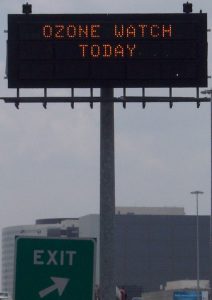 What are the consequences of this continuing violation of the Clean Air Act that imperils public health? Nada probably. At least while the Trump Administration holds office. In the past such classifications would have triggered a process leading up to some kind of official plan of action that, at least rhetorically, is aimed at correcting the 30-year old problem. But no one expects the State of Texas, or now the EPA, to take that responsibility seriously.
What are the consequences of this continuing violation of the Clean Air Act that imperils public health? Nada probably. At least while the Trump Administration holds office. In the past such classifications would have triggered a process leading up to some kind of official plan of action that, at least rhetorically, is aimed at correcting the 30-year old problem. But no one expects the State of Texas, or now the EPA, to take that responsibility seriously.
What you can expect is some official TCEQ spin about how it’s been successful in bringing down smog pollution levels. In fact, it was the wettest September on record that brought an abrupt end to what was shaping up to be an even worse smog year than it already was at the end of August. Historically, September is when DFW sees some of its worst bad air days. But not this year.
Accompanying the rise in smog pollution in 2018 was also a dramatic rise in the regional numbers for Particulate Matter (PM) pollution – the highest North Texas has seen since 2003.
After a long spell of annual peaks of between 24 and 28 migrograms per cubic meter of air, the 2018 average for highest daily readings among all sites has risen dramatically as of this month – to almost 40 µg/m3
Before this year, they’d only been four daily peaks above 40 µg/m3 over the last 15 years. In 2018 four out of 6 PM monitoring sties had registered daily readings averaging between 41 an 43 ppb as of October.
The EPA annual standard for PM pollution is 12 µg/m3. The 24 hour standard is 35 µg/m3.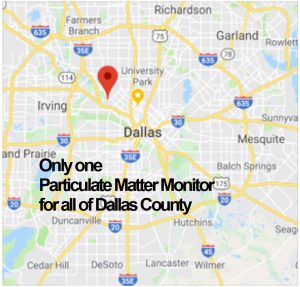
As with smog, these readings are coming from a very small pool of monitors – in this case just six PM monitors scattered over an area only slightly smaller than Rhode Island.
Some of this might be blamed on the drought we we experiencing during the summer and increased dust circulation, but comparing it to 2011 when similar if not worse conditions were in play shows no similar bump then. Fewer coal plants blowing their plumes into DFW this year might lead you to think we were even due for a drop. Instead it’s as if someone turned the key on a couple more. There’s no obvious reason why PM levels would have jumped so much in a single year.
What’s clear is that local governments are the last refuge for effective and new air pollution control measures. Until political leadership changes in Austin and/or Washington, there’s no expectation of any relief. In fact, every day sees new proposals from the State or EPA that will actually increase smog and PM pollution in DFW. This is why local city and county elections are just as important as state and national ones.
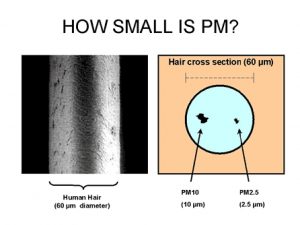 We’ll have to wait until the end of 2019 to see if this rise in pollution averages is a trend or blip, but there’s no question that smog and PM are taking their toll on public health in DFW. Study after study shows harms at levels of exposure well below these annual and daily averages that determine EPA regulations. In the real world, your lungs, heart, brain and immune system don’t seem to be able to distinguish between “safe” and “unsafe” levels of poison as defined by the government.
We’ll have to wait until the end of 2019 to see if this rise in pollution averages is a trend or blip, but there’s no question that smog and PM are taking their toll on public health in DFW. Study after study shows harms at levels of exposure well below these annual and daily averages that determine EPA regulations. In the real world, your lungs, heart, brain and immune system don’t seem to be able to distinguish between “safe” and “unsafe” levels of poison as defined by the government.
Joppa Becomes Citizen Science Case Study; Next Portable Monitor Training Session Oct 28th

Shannon Gribble and Cresanda Allen on a monitoring run in Joppa
You’re Invited to Train on the Same Portable Monitors & Get Access to Our Monitor Lending Library…For FREE
CITIZEN SCIENCE TRAINING SESSION
SUNDAY OCTOBER 28th
1-3 pm
GOODWORK CO-WORKING SPACE
1808 S. GOOD-LATIMER
Let us know you’re coming: RSVP downwindersatrisk@gmail.com
Downwinders is proud to announce that our precedent-setting use of portable PM monitors to help Joppa residents defeat two proposed batch plants earlier this year was selected by manufacturer Aeroqual as a case study showing how its new air pollution technology has made a positive difference in the world.
Joppa will join other examples from places like Tanzania, Iraq, India, and Peru on the Aeroqual website. It will be the only success story attributable to a citizens group as opposed to a government agency, university, or business.
“Timing is everything” is a cliche but in this case the banality is on point.

Aeroqual’s new 500 series hand held portable PM monitors had only become available in January of this year, at exactly the time Downwinders was looking for a device that was highly reliable but not prohibitively expensive. In offering the 500, New Zealand-based Aeroqual carved its own market niche and met our criteria like a glove – more reliable than the extremely cheap consumer sensors you can buy on Amazon and less expensive than similarly calibrated machines affordable only to universities, industry and government.
Because they were so new, we had to call Aeroqual in New Zealand to order them directly. We were their first US customers. Downwinders ordered two for deployment in our PM Pollution Prevention campaign. When they arrived in late February, they were the only ones being used between New Zealand and the US.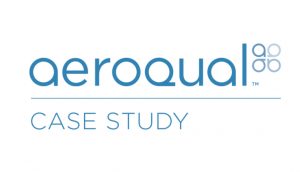
Since then, the company has made huge inroads into the US market, to the point of partnering with the EPA in Los Angles to establish a 100-monitor air network for Particulate Matter and smog pollution, and being considered for the monitor in the City of Dallas/Texas Nature Conservancy Breathe Easy study.
Downwinders’ original plan was to use the monitors to document PM levels along DART routes as research for our Green Streets bus electrification effort and set out for a couple of weeks doing nothing but measuring levels of PM inside and outside of buses.
We were still doing that when we got a call from the Joppa Freedman’s Township Association to request we turn our attention to their fight over two new batch plants.
Aeroqual’s portable machines provided the first, and so far only, air sampling in Joppa. They recorded significantly higher PM levels than the official EPA site some nine miles away. This was the same EPA site Dallas city staff was using to give Joppa the all-clear. The fact that the Aeroqual monitors came factory-calibrated out of the box and were supervised in their use by a local atmospheric scientist enhanced their credibility.
Their results were widely publicized only days before the City Council vote and combined with opposition on the ground, contributed to the council vote against the batch plant permits. It was the first time in local history, and we’re pretty sure in Texas or even the country, that this new technology became a tool for citizens in a successful permitting battle. And that’s why we’re ending up as the first citizens group case study for Aeroqual.
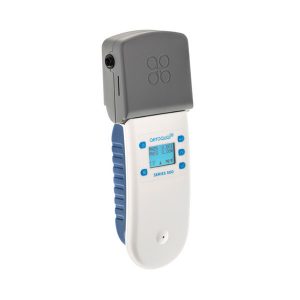
NOW IT’S YOUR TURN: MAKE HISTORY
CITIZEN SCIENCE TRAINING SESSION
SUNDAY OCTOBER 28th 1-3 pm
GOODWORK CO-WORKING SPACE
1808 S. GOOD-LATIMER
Let us know you’re coming: RSVP downwindersatrisk@gmail.com
This training session is a chance to become familiar with this new technology and work your way toward being able to check out these portable monitors on your own. No previous experience required. No math or engineering degrees necessary. If you can push buttons and read numbers, you can do this. It only takes two hours.

Along with first-timers, graduates from our first classes of Apprentice Citizen Scientists are invited back to take a field trip with our PM Committee and step-up to “Researcher” status. After one more outing, they’ll be given permission to check out the monitors for their own purposes or to help with our projects.
We’re entering a new era of Do-It-Yourself Environmental Protection. Learn how you can join it.
First Citizen Scientists Graduate From Portable Air Monitoring Training Class

L to R: Amanda Poland, Misti O’Quinn, Dr. Tate Barrett, James Orenstein, Temeckia Derrough, Candice Johnson, Evy Mayo, Jim Duncan, Kim Limberg, Liz Alexander, Miriam Mathews Fields and Cresanda Allen
In the middle of the wettest day in the wettest September DFW had ever recorded, the clouds parted and a dozen brave and curious souls turned out to go through the region’s first citizen science training for portable air monitoring.
Some were already clean air activists. Some were technology geeks. Some were people simply interested in having the ability to tell what’s in the air they’re breathing.
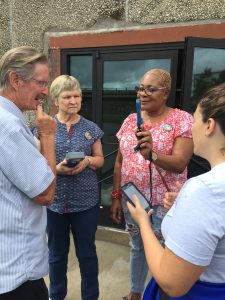 When they showed up to our GoodWork headquarters they got a tag team education on Particulate Matter pollution courtesy of a curriculum designed and presented by Downwinders board members and scientists. The information set-off lively discussions among residents of Joppa and West Dallas where PM problems are common. For others, the facts brought new awareness about this under-publicized but insidious pollutant.
When they showed up to our GoodWork headquarters they got a tag team education on Particulate Matter pollution courtesy of a curriculum designed and presented by Downwinders board members and scientists. The information set-off lively discussions among residents of Joppa and West Dallas where PM problems are common. For others, the facts brought new awareness about this under-publicized but insidious pollutant.
But no doubt many thought the real fun started with the hands-on field training using Downwinders’ three Aeroqual 500 Portable PM monitors. Despite the forecast, there was actually no rain during either the morning or afternoon session and the future scientists got to go explore inside and out.
They recorded the dust explosion set off by simply sweeping the floor with a broom. They saw how a lit match changed the composition of the air in a room. They stood downwind from fog machines that were faux-smokestacks for the day and they measured the ambient air in Sunny South Dallas on Good-Latimer. They learned how to sync meteorological tools with the monitors and record the necessary information to make a sampling more useful. They asked questions, they got in arguments and at the end of it all, they got certified as an official Citizen Science Apprentices. They’ll now be able to go out with our PM team for supervised research runs and after two of those they’ll be able to check out monitors on their own through our monitor lending library.
Our PM Committee is already looking to host another training session on a weekend in late October and these will be reoccurring on a regular basis from here on out. Be the first one on your block.

